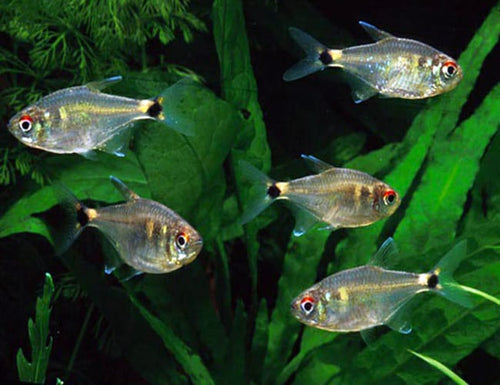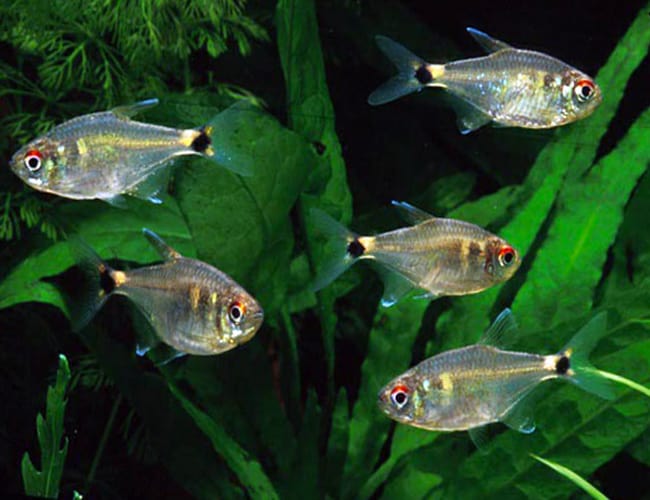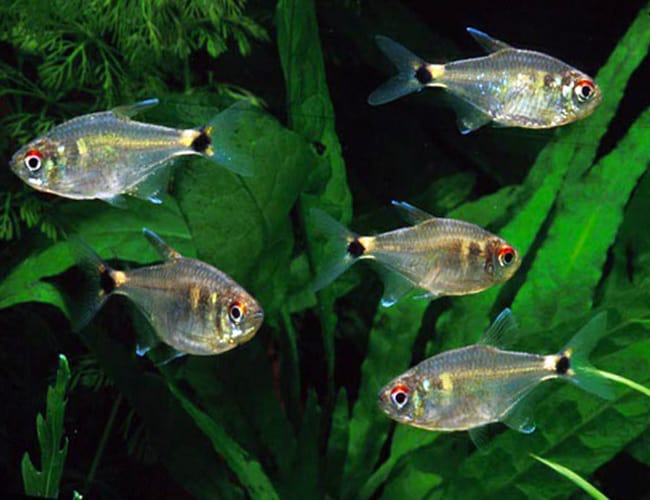Tetra-Head & Tail Light
Tetra-Head & Tail Light
check_circle Fast Shipping
check_circle Quality Products
check_circle Affordable Price
Reach out to us on ''available to order'' items via WhatsApp or email
16 in stock
Couldn't load pickup availability

Tetra-Head & Tail Light
package_2
Product Description
Product Description
All our fish, shrimp and corals are bagged with fresh oxygen as well as a heat pack in winter.
When ordering livestock please select the box size and add it to your cart for accurate overnight (1-2 days) shipping costs. A small box can take 1-2 bags and a medium box 6 bags. One bag fits max 10 small (1-3cm) fish or max 2 medium (3-5cm) fish or max 1 large (>5cm) fish.
ONE SPECIES PER BAG. Eg: One bag of 10 neon tetra
Best known for its coppery spots that look like taillights, the head and tail light tetra hails from freshwater rivers and streams in South America. A peaceful schooling fish, this tetra species does not need a large tank. It does, however, need plenty of open swimming space and subdued mood lighting to keep it content.
Species Overview
COMMON NAMES: Beacon fish, beacon tetra, head and tail light tetra
SCIENTIFIC NAME: Hemigrammus ocellifer
ADULT SIZE: 5cm
LIFE EXPECTANCY: 5 years
Characteristics
| Family | Characidae |
|---|---|
| Origin | Argentina, Brazil, French Guiana, Guyana, Peru, and Suriname |
| Social | Peaceful, schooling fish |
| Tank Level | Mid-dweller |
| Minimum Tank Size | 56L |
| Diet | Omnivore |
| Breeding | Egglayer |
| Care | Easy |
| pH | 6 to 8 |
| Hardiness | 5 to 19 dGH |
| Temperature | 22 to 26 C |
Origin and Distribution
Hemigrammus ocellifer originates in South America, where it can be found in numerous locations along the Amazon River and in the Orinoco river basin, as well as along the coast of Guyana. Favoring the slow-moving rivers and streams, it can be found in Argentina, Brazil, French Guiana, Guyana, Peru, and Suriname. Wild-caught specimens are rarely sold in the aquarium trade, as most are now captive-bred for commercial sale.
Their scientific name comes from the Greek Hemmigrammus meaning "half-line," which refers to an incomplete lateral line, and ocellifer, which means "eye bearing," a reference to the reflective spots or "eyes" on the head and tail of the fish. First described as Tetragonopterus ocellifer, this species was later moved to the Hemigrammus genus.
Colours and Markings
Adults reach a length of approximately 5 centimeters. The body of this fish is iridescent silver in color and, like many other tetras, is oval in shape. Seen from above, the body is compressed, and males are thinner than their female counterparts. The upper rim of the eye is edged in brilliant red, appearing similar to the redeye tetra. The body and fins are somewhat translucent, and on some specimens, a fine black line runs from mid-body to the spot on the tail fin.
Head and tail light tetras are named for two coppery coloured reflective spots that resemble automotive lights. One is located at the base of the tail and the other is near the head next to the gill cover. These reflective patches are coupled with a black spot. The inheritance of this spotting pattern is of particular interest, since it probably serves as a deceptive "eyespot," mimicking the reflective red colour of the retina of the fish's eye.
Hemigrammus ocellifer falsus, has been named as a possible subspecies of this fish. It is more slender and has the “taillight” spot, but lacks the spot behind the gill cover.
Tankmates
Head and tail light tetras do best in schools of a half dozen or more and can be kept with other peaceful fish, particularly other members of the tetra family. Barbs, danios, rasboras, and other small to medium-sized peaceful fish are also good companions. Small loaches, catfish, dwarf cichlids, and the smaller gouramis are also suitable.
To avoid are fish that are large enough to eat tetras. Also note that head and tail light tetras may nip at the fins of slow-moving, long-finned species such as angelfish and bettas.
Head and Tail Light Tetra Habitat and Care
To see this little tetra shine, set up a biotope tank with real or artificial plants. Floating or tall plants that reach the top of the tank provide shade and are particularly desirable, as this fish prefers shady spots.
Use river sand or a darker substrate, which will add to the subdued décor. Add a few driftwood branches and twisted roots. A few handfuls of dried leaves (beech or oak leaves are suitable) would complete the natural feel. Allow the wood and leaves to stain the water the color of weak tea. Remove the old leaves and replacing them every few weeks so they don’t rot and foul the water.
Add a small net bag filled with aquarium-safe peat to the filter to aid in the simulation of black water conditions. Leave some open swimming space in the middle to complete the ideal tank arrangement.
Head and Tail Light Tetra Diet and Feeding
Omnivorous in nature, the head and tail light tetra will eat most foods, but it will not nibble on live plants. Provide a good variety of flake foods along with freeze-dried or frozen live foods, such as brine shrimp, bloodworms, and small insects. They will eat fine pelleted food as well. Only live foods should be used when conditioning before breeding.
Gender Differences
Females are rounder and plumper than males, particularly when viewed from above. The internal swim bladder in the male is pointed and more visible than the rounded swim bladder in the female. Since this fish is translucent, it is possible to view the swim bladder by candling over a strong light.


